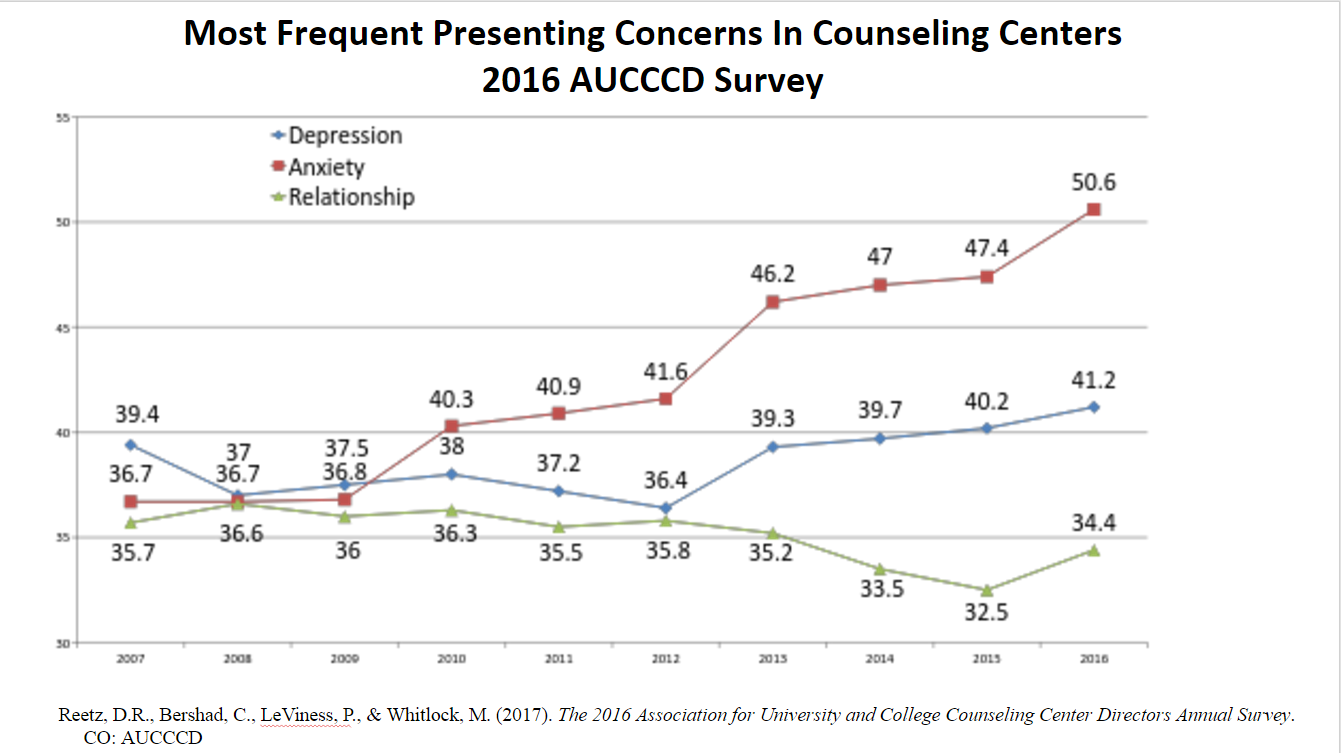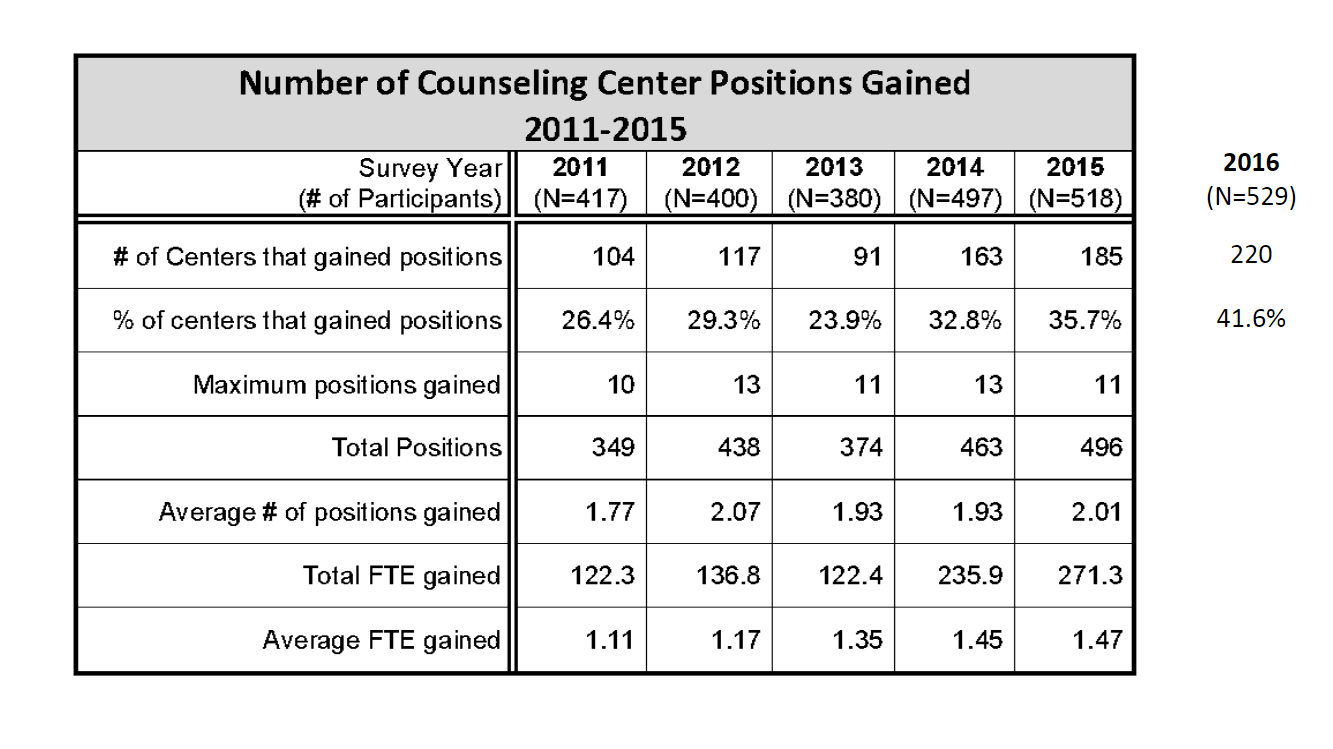You have /5 articles left.
Sign up for a free account or log in.
More than half of the college students who visited their campus counseling centers during the 2015-16 academic year reported symptoms of anxiety, according to a survey by the Association for University and College Counseling Center Directors.
This marks the seventh year in a row that anxiety has been the top complaint among students seeking mental health services. This year, 51 percent of students who visited a counseling center reported having anxiety, followed by depression (41 percent), relationship concerns (34 percent) and suicidal ideation (20.5 percent). Many students reported experiencing multiple conditions at once.
Since 2009, when anxiety overtook depression as the No. 1 concern among college students, the number of students experiencing anxiety has steadily increased.
This survey was conducted between September 2015 and August 2016. In total, 529 counseling center directors representing that many institutions responded to the survey, with an even split between public and private institutions. The majority of respondents came from four-year colleges, but community colleges, professional schools and art schools were also included.
In an effort to reflect the makeup of their student bodies, counseling centers have diversified their clinical staff members. Of new hires, 62.2 percent are white, 15.3 percent black, 7.5 percent Latino and 10 percent Asian. This compares to current clinical staff, who are 70.9 percent white, 10.1 percent black, 7.3 percent Latino and 7.9 percent Asian.
“Student populations have become more diverse,” said Micky Sharma, president of the AUCCCD and director of counseling and consultation services at Ohio State University. “Counseling services work to create a staff that represents their student bodies.”
At Ohio State, for example, the counseling center now offers clinical services in nine different languages to meet the needs of their international students, who make up about 12 percent of the student body, Sharma said.
Regardless of race, ethnicity, gender or sexual orientation, “anyone could show up with anxiety or depression or a relationship issue,” Sharma said. “A university counseling center is charged with providing help for everybody.”
Another key finding in the survey is that 41.6 percent of counseling centers hired additional staff members in the last academic year, compared to about 26 percent in 2011 and 36 percent in 2016.
College counseling centers continue to grow to match the demands of their students, according to David Reetz, the lead researcher and coordinator for the 2016 survey and director of counseling and psychological services at the Rochester Institute of Technology.
“More students are seeking services because we continue to be more and more aware that a student’s health and well-being have a lot to do with their success in their academic programs and the quality of their student life experience,” Reetz said.
In fact, of the students surveyed, about 72 percent who used counseling services said it helped their academic performance in some way.
As more students continue to seek out mental health services and campus counseling centers try to keep up with new hires, the question of student wait times becomes key.
For the first time, this year’s survey asked counseling center directors about average wait times for students based on the number of business days between when the appointment was scheduled and when it occurred.
The survey team found that, on average, students waited between six and eight business days for counseling services. However, as might be expected, institutions with a lower ratio of professional staff to students saw shorter wait times.
Reetz noted that the wait-time average is a “tricky number,” given that some students opt to schedule their first appointment farther out to accommodate their own schedules.
“Students don’t necessarily want to be seen right away,” Reetz said, adding that, generally, “the more staff a center has, the shorter that wait time is between initial contact and first appointment.”









